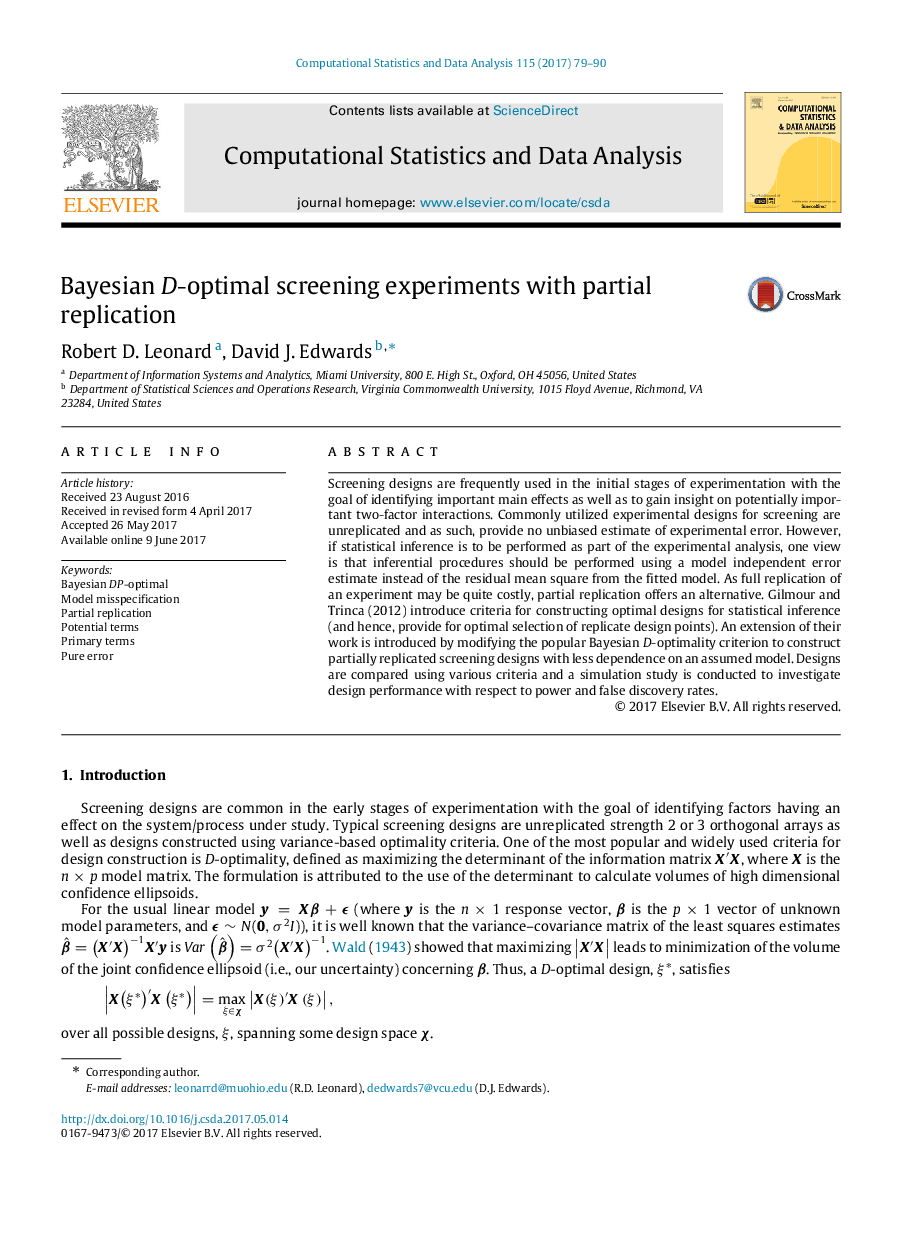| Article ID | Journal | Published Year | Pages | File Type |
|---|---|---|---|---|
| 4949238 | Computational Statistics & Data Analysis | 2017 | 12 Pages |
Abstract
Screening designs are frequently used in the initial stages of experimentation with the goal of identifying important main effects as well as to gain insight on potentially important two-factor interactions. Commonly utilized experimental designs for screening are unreplicated and as such, provide no unbiased estimate of experimental error. However, if statistical inference is to be performed as part of the experimental analysis, one view is that inferential procedures should be performed using a model independent error estimate instead of the residual mean square from the fitted model. As full replication of an experiment may be quite costly, partial replication offers an alternative. Gilmour and Trinca (2012) introduce criteria for constructing optimal designs for statistical inference (and hence, provide for optimal selection of replicate design points). An extension of their work is introduced by modifying the popular Bayesian D-optimality criterion to construct partially replicated screening designs with less dependence on an assumed model. Designs are compared using various criteria and a simulation study is conducted to investigate design performance with respect to power and false discovery rates.
Keywords
Related Topics
Physical Sciences and Engineering
Computer Science
Computational Theory and Mathematics
Authors
Robert D. Leonard, David J. Edwards,
